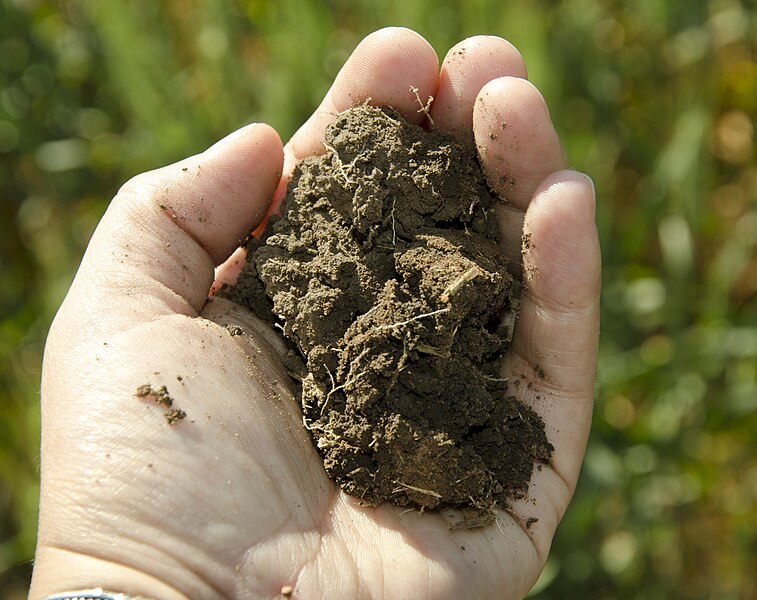
Wheat is one of the most widely cultivated crops in the world, and its successful cultivation is heavily influenced by the type and quality of the soil. Soil plays a critical role in wheat growth by providing essential nutrients, water, and structure for healthy root development. The soil type, texture, pH, fertility, and drainage conditions all impact wheat yields and the overall quality of the crop. This article provides an overview of the key factors that influence soil suitability for wheat production.
1. Soil Texture and Structure
Soil texture refers to the proportion of sand, silt, and clay particles in the soil, which affects its water retention, nutrient-holding capacity, and ease of tillage. For optimal wheat growth, soils with a loamy texture are ideal, as they provide a balance of water-holding capacity and good drainage. Loamy soils are rich in essential nutrients and offer sufficient aeration for roots, which is important for healthy wheat growth.
Sandy Soils
Sandy soils have a high proportion of sand particles, which results in good drainage but poor water retention. While these soils may not retain enough moisture during dry periods, they are easier to work with and warm up faster in the spring. They are often used for wheat production in regions with moderate to low rainfall, where irrigation is available to supplement water needs.
Clay Soils
Clay soils have a higher proportion of fine particles, which leads to better water retention but slower drainage. While clay soils can provide a stable environment for wheat during dry spells, they are prone to waterlogging and poor aeration if not properly managed. Proper tillage and drainage are essential in clay soils to prevent root rot and other diseases that can negatively affect wheat yields.
Loamy Soils
Loam soils, with a balanced mix of sand, silt, and clay, are generally considered the best for wheat production. They provide adequate drainage while maintaining sufficient moisture retention and are nutrient-rich, promoting healthy growth. Loam soils are ideal for most wheat-growing regions as they offer a good balance between water retention and aeration.
2. Soil pH
The pH level of soil indicates its acidity or alkalinity and has a significant impact on the availability of nutrients to plants. Wheat grows best in soils with a pH range of 6.0 to 7.5, which is considered neutral to slightly alkaline. Soils that are too acidic (below 6.0) can limit the availability of essential nutrients like phosphorus, calcium, and magnesium, while highly alkaline soils (above 7.5) can lead to micronutrient deficiencies.
Farmers may need to adjust soil pH levels using lime to raise pH in acidic soils or sulfur to lower pH in alkaline soils, depending on the local conditions.
3. Soil Fertility
Soil fertility is the ability of the soil to provide essential nutrients for plant growth. Wheat requires a variety of nutrients, including nitrogen, phosphorus, potassium, and trace elements such as zinc, iron, and manganese. Nitrogen, in particular, is critical for wheat development, as it promotes vigorous vegetative growth and ensures a high yield.
Fertilization
In many wheat-growing regions, soils may not provide sufficient levels of nutrients for optimal crop production, necessitating the use of fertilizers. Nitrogen fertilizers are commonly applied to wheat crops to support growth during the early stages, while phosphorus and potassium are often added to promote root development and improve overall plant health.
Organic Matter
Incorporating organic matter such as compost or cover crops into the soil can significantly improve its fertility by increasing nutrient availability, enhancing soil structure, and promoting microbial activity. Organic matter helps maintain soil moisture and supports a healthy ecosystem for wheat growth.
4. Soil Drainage
Proper soil drainage is essential for preventing waterlogging, which can lead to root diseases, poor aeration, and reduced yields. Soils with good drainage allow excess water to escape while retaining enough moisture for the wheat plants to thrive. In regions with heavy rainfall, farmers often implement drainage systems, such as tile drainage or surface drains, to prevent water accumulation and ensure proper root development.
In dry regions, proper soil moisture retention is equally important. Soils that are too sandy may require irrigation to maintain adequate moisture levels for wheat growth, while soils with excessive clay content may need to be amended with organic matter or sand to improve water drainage.
5. Soil Conservation Practices
Soil erosion is a major concern in wheat farming, particularly in areas where heavy rainfall, strong winds, or improper farming practices may lead to the loss of topsoil. Soil conservation practices, such as no-till farming, crop rotation, and the use of cover crops, help preserve soil quality, prevent erosion, and promote sustainable wheat production.
Soil for Wheat Production
Soil is a fundamental factor that influences the success of wheat production. The ideal soil for wheat farming depends on a balance of texture, pH, fertility, and drainage conditions. Loamy soils with a neutral pH and good fertility are generally the best for wheat, although farmers can adapt to various soil types through proper management practices. By understanding the specific soil requirements for wheat and adopting appropriate techniques, farmers can optimize yields, reduce environmental impacts, and ensure the long-term sustainability of wheat production.